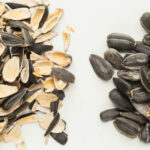
In this article
Dietary fiber is a type of carbohydrate that your body can’t fully digest, found in plant foods like grains, vegetables, fruits, nuts, and seeds. Despite its many benefits, most Americans only consume about half the recommended daily amount.
There are two main types of fiber: soluble and insoluble. Soluble fiber slows digestion, turning into a gel-like substance in water and influencing blood sugar and cholesterol levels. Insoluble fiber speeds up digestion and helps maintain a healthy gut by keeping things moving smoothly. Both types of fiber offer numerous health benefits, though it’s possible to consume too much, and there are safety considerations when taking supplements.
Benefits of Fiber
1. Prevents Blood Sugar Spikes
Type 2 diabetes affects around 11% of Americans, with up to 95% of them having type 2 diabetes. Prediabetes and metabolic syndrome are present in about 33% of the population. Metabolic syndrome, a cluster of conditions including high blood sugar, blood pressure, and cholesterol, increases the risk of heart disease, stroke, and type 2 diabetes. Fiber, as a carbohydrate that isn’t digested, helps manage diabetes by keeping blood sugar levels stable.
2. Supports Gut Health
Fiber works like a broom for your intestines, but its benefits extend beyond that. Trillions of beneficial gut bacteria help digest food and maintain a healthy balance in your microbiome. High-fiber diets positively influence gut microbiota, which in turn affects overall health, including blood sugar, cholesterol, and insulin levels.
3. May Reduce Your Risk of Colon Cancer
Many colon cancers begin as benign polyps in the colon or rectum. High-fiber diets are believed to reduce the risk of these polyps turning into cancer. Although research shows mixed results, some studies indicate that fiber from cereals or whole grains lowers colon cancer risk.
4. May Help You Lose Weight
With over 75% of U.S. adults and 20% of children being overweight or obese, high-fiber foods can aid weight loss by making you feel fuller for longer. A study of 345 participants on calorie-restricted diets found that higher fiber intake supported weight loss, regardless of macronutrient distribution.
5. Can Help Prevent Diverticulitis
Diverticulitis, an inflammation of pouches in the intestines, affects over 30% of U.S. adults, rising to 70% in those over 80. Contrary to past advice to avoid seeds and nuts, high-fiber diets rich in fruits, vegetables, and whole grains are now associated with less diverticular disease.
6. May Reduce Your Risk of Breast Cancer
Approximately 240,000 Americans are diagnosed with breast cancer annually. A review of 20 studies found that higher fiber intake correlates with a lower breast cancer risk. While these studies often rely on self-reported food intake, more research is needed to solidify these findings.
7. May Improve Your Heart Health
Heart disease is the leading cause of death in the U.S. Studies show that high-fiber diets have protective effects against heart disease and atherosclerosis. Although many studies are observational, high fiber intake is generally associated with better heart health.
Good Sources of Fiber
High-fiber foods are easy to find, including:
- Leafy greens (lettuce, Swiss chard, spinach)
- Cruciferous vegetables (broccoli, Brussels sprouts)
- Root vegetables (carrots, potatoes)
- Beans, legumes, peas
- Nuts, seeds
- Fruits (apples, kiwis, tomatoes, avocado)
- Whole grains (oats, barley, quinoa, brown rice)
Specific high-fiber foods and their content include:
- Black beans: 9g per ½ cup (32% DV)
- Avocado: 4.6g per ½ fruit (18% DV)
- Sweet potato: 4g in a medium potato (15% DV)
- Dried apples: 4g in ½ cup (15% DV)
- Blackberries: 3.5g in 1 cup (12.5% DV)
- Whole grain bread: 3g in 1 slice (11% DV)
How to Use Fiber
Increase your fiber intake by eating more whole foods like fruits, vegetables, beans, nuts, seeds, and grains. Fiber supplements, available as powders, caplets, and gummies, can also help but should be taken with caution and under healthcare provider guidance.
Dosage
The Dietary Guidelines for Americans recommend 22-34 grams of fiber per day, depending on age and sex. Spread your intake throughout the day with high-fiber foods at meals and snacks. Supplements should not replace fiber-rich foods but can be helpful if dietary intake is insufficient or to alleviate constipation.
Is Fiber Safe?
Fiber is safe and natural, but proper hydration is essential when taking supplements to prevent choking. Some medical conditions may require avoiding certain fiber supplements. People with IBS should consult healthcare providers for specific fiber needs.
Potential Drug Interactions
Fiber supplements may interfere with medication absorption, making them less effective. Examples include diabetes medications (metformin), mental health medications (lithium, olanzapine), seizure medications (carbamazepine), and heart medications (digoxin). Healthcare providers might recommend taking fiber supplements an hour after these medications.
Where to Find Fiber
High-fiber foods are readily available in grocery stores, particularly in the produce section. Fiber supplements can be found in pharmacies and most grocery stores, though it’s important to choose brands with third-party safety testing due to the lack of FDA regulation.
Can You Have Too Much Fiber?
Excessive fiber intake can cause gas and bloating, but these symptoms often subside as the body adjusts. High fiber can also reduce absorption of minerals like calcium and magnesium, though fiber-rich foods usually contain these minerals.
Side Effects of Fiber
Introducing more fiber too quickly can cause gastrointestinal issues like cramping, bloating, and gas. Gradually increasing fiber intake and staying hydrated can minimize these side effects. Monitor your symptoms and adjust intake as needed, and consider consulting a healthcare provider for advice on fiber supplements that are easier to digest
A Quick Review
Dietary fiber is crucial for maintaining good health, offering benefits like blood sugar control, improved gut health, reduced cancer risk, weight loss support, prevention of diverticulitis, and improved heart health. However, most people consume less than the recommended amount. Increasing fiber intake can enhance overall well-being
FAQS
What are the two types of dietary fiber?
Soluble and insoluble fibers. Soluble fiber slows digestion and can affect blood sugar and cholesterol levels, while insoluble fiber speeds up digestion and helps maintain regularity.
How does fiber support weight loss?
High-fiber foods take longer to eat and digest, making you feel fuller for longer, which can help control appetite and support weight loss.
Can fiber reduce the risk of colon cancer?
High-fiber diets may reduce the risk of developing benign polyps that can turn into colon cancer, particularly fiber from cereals or whole grains.
Is it possible to consume too much fiber?
Yes, consuming too much fiber can lead to gas, bloating, and reduced absorption of certain minerals. It’s best to increase fiber intake gradually and stay hydrated.
What are some good sources of dietary fiber?
Leafy greens, cruciferous vegetables, root vegetables, beans, legumes, nuts, seeds, fruits, and whole grains are excellent sources of fiber.
How can fiber improve heart health?
High-fiber diets are associated with protective effects against heart disease and atherosclerosis, helping to maintain healthy cholesterol levels.











